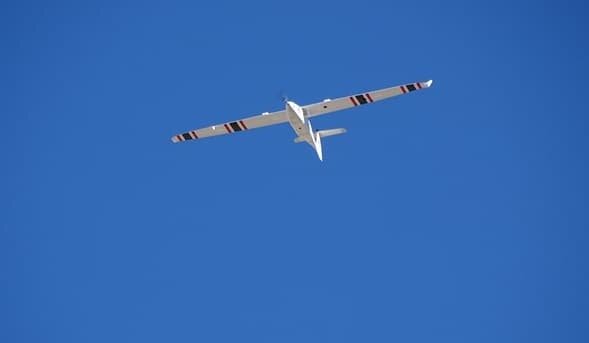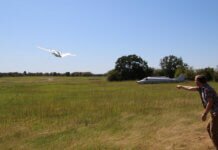Nevada’s unmanned cloud-seeding research team has realized another fundamental capability in its effort toward enhancing snowfall in mountainous regions of the West. On Feb. 15, the team completed a one-hour drone flight that took place beyond the visual line of sight (BVLOS).
Flown at Hawthorne Industrial Airport under a Certificate of Authorization at the Nevada unmanned aircraft systems (UAS) test site, the Drone America “Savant” reached an altitude of 1,500 feet and covered a total distance of 28 nautical miles. Leading the operation was the Desert Research Institute (DRI), the nonprofit research arm of the Nevada System of Higher Education.
Under a BVLOS flight, crew members control and track the aircraft in real time by using computer-aided controls, but the pilot is not capable of visually following the aircraft with the naked eye. However, this operation was supported by multiple ground-based safety officials and visual observers.
“We have now demonstrated, without a doubt, that our unmanned cloud seeding technology and capabilities can move beyond line of sight – a significant hurdle in this industry,” says Adam Watts, Ph.D., principal investigator on the project and an assistant research professor at DRI. “Most importantly, we have done this safely and in following all FAA regulations and guidelines.”
For more than a year, a DRI-led research team – supported by the Nevada governor’s Office of Economic Development through the Knowledge Fund – has been working to develop a cloud-seeding UAS capable of helping communities address the ongoing impacts of drought and explore new solutions for natural-resource challenges, such as augmenting regional water supplies.
The research team combines DRI; Reno-based UAS manufacturer and operator Drone America; and Las Vegas-based AviSight, an aerospace and remote sensing services company.
Mike Richards, president and CEO of Drone America, notes, “Reaching this milestone allows us to now focus on higher-altitude, longer-distance flights, as well as the extreme challenges of flying our advanced, unmanned, fixed-wing aircraft in the harsh, icy weather that comes with optimal winter cloud-seeding conditions.”










